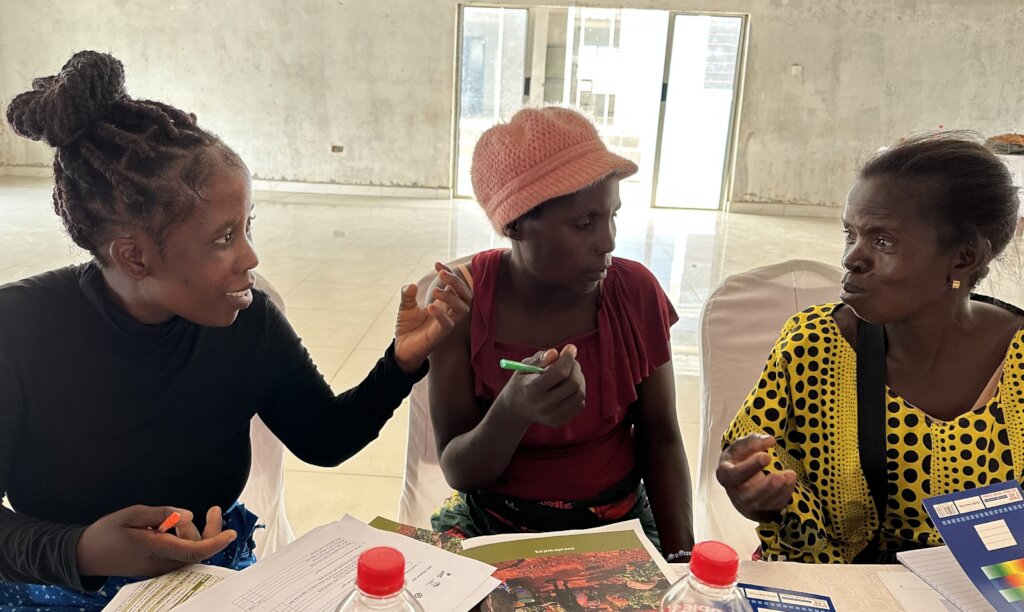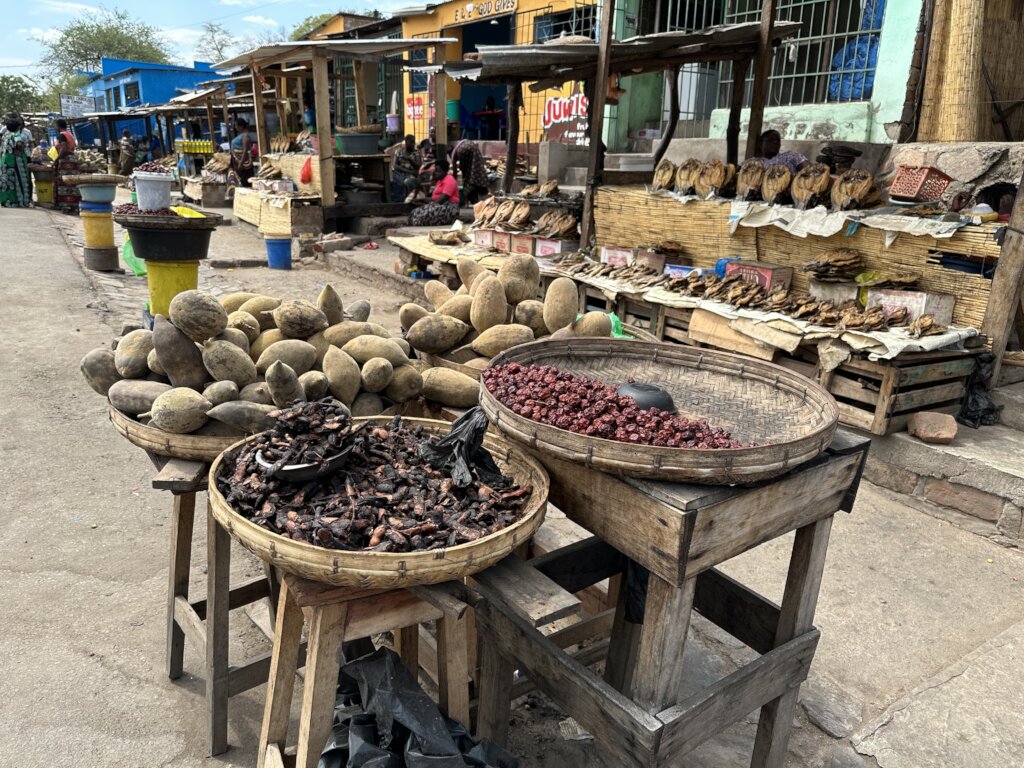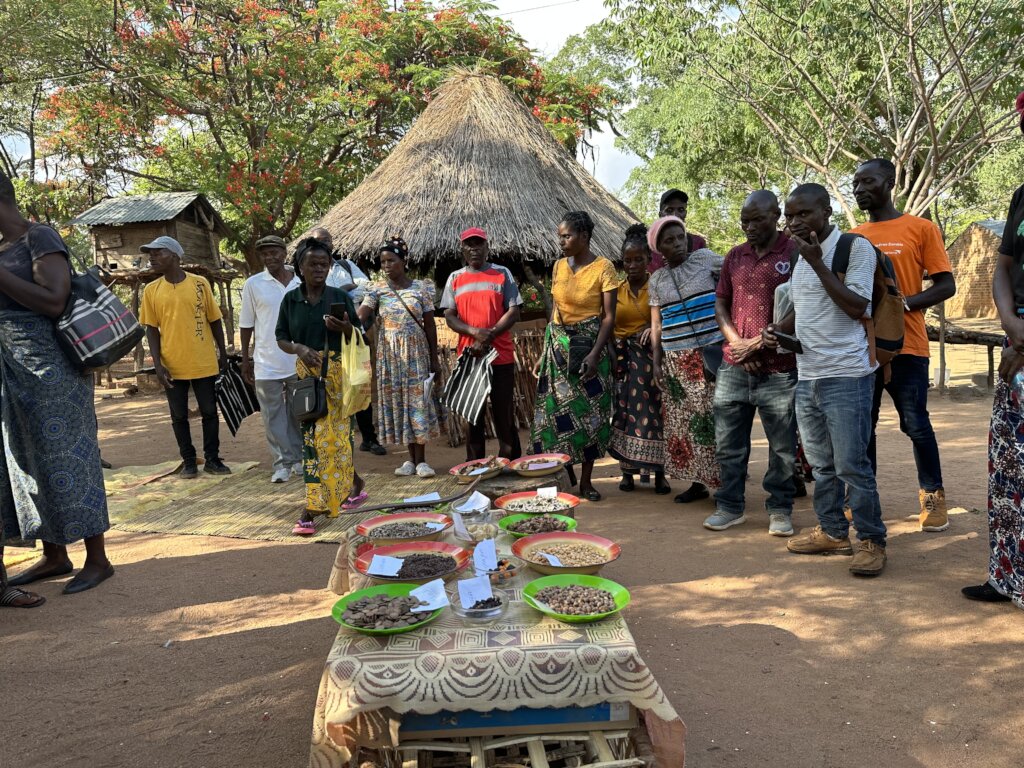By Cathy Watson | Chief of Partnerships
Workshops have a poor reputation, a byword for wasting donor funds, attendees only present for snacks, and facilitators spouting waffle. But not the workshop we just concluded in Eastern Zambia.
"I have come for learning. I want to create high quality fruit," said one farmer.
"When we hear about climate change, it makes us really panic," said another.
"I want to make money and preserve the environment," said a third.
From 28 to 30 Novermber, we held 40 farmers rapt as we worked with them on how to identify mother trees, collect seed, process it and set up nurseries. The trees in question are indigenous fruit trees, which abound in Zambia's miombo woodlands. They are spectacularly nutritious but under threat from tree cutting for charcoal and the expansion of farms into forest, even in this land rich country with a population density of just 25 people per square kilometer.
We were running the workshop with our partners from the Zambia Agricultural Research Institute (ZARI) and the NGO COMACO. We were well prepared. We had reworked our 12 page manual, which participants pored over, able to read most of the English though they preferred speaking one of three Zambian languages. Along the seven hour drive from Zambia's capital Lusaka, we had collected buckets of tree seed to use in the practical exercises.
Keeping our eyes peeled, we stopped everytime we spotted a native fruit tree. In one stroke of luck, we saw a Masuku tree (Uapaca kirkiana) with its brown fruit. An elderly lady sitting next to it explained to us how she dried and pounded the brignt yellow flesh and used the resulting powder to flavour porridge instead of sugar, which of course must be store bought. This turned out to be the way a number of indigenous fruits were used, as a sugar substitute and flavor enhancer.
Right next to that tree was an Mpundo (Parinari curatellifolia), which produces an equally tasty and useful fruit. Its seeds unfortunately can take up to two years to germinate, taxing anyone's patience. Some trees do not make it easy for well intended human beings to sustain their populations, we remarked to each other, half jokingly. But of course, there are evolutionary reasons why one propagates easily and another does not, noted Rhett, the ecologist in our vehicle.
At the market just before we crossed the Luangwa River, we bought baobab pods. Some were round, and some were pointed, a sign that they were from different tree populations. This was important because we needed to explain to the participants about the critical value of maintaining genetic diversity. We also bought tamarind pods and Musawu fruit. The latter comes from a short spiny tree called Ziziphus mauritiana. It tastes tangy like dried apricot or the US candy Sweet Tart, a sign that it is rich in Vitamin C.
Opening the event, Ray from COMACO said "This training is about how to collect seed in a proper way so that you get good trees". His colleague Boniface said "Wild fruits are a very good souce of income. Those ladies selling them along the roads are from the community". And Gibson from ZARI said that different tree species fruit at different times of the year "so it is not enough to have just one type of fruit tree".
The main trainers were Ludy from CIFOR-ICRAF and Alfred, one of Zambia's top most indigenous fruit tree experts. Giving the principles of tree seed collection, Ludy said "If you collect all your seed from one tree, you are collecting siblings. So collect seed from 25 to 30 trees and leave 50 to 100 meters between trees."
Alfred said "Indigenous trees are hardy species that tolerate even a desert environment".
It wasn't all lectures. We had group work, reflections on sessions, and a field trip to a farm where trainees climbed trees carefully and used improvised cutting shears - a secateur on a long pole -- to bring down high up seed.
"We make drinks from these fruit, and our children bring them to school," said one mother in group work.
"When you are going to the bush, you have to know how much seed to collect," reflected a male farmer.
Participants also reflected that they had changed their view of native trees, which they previously associated with hardship.
We know from our previous training in March that we are having an impact. Several of that batch of trainees have set up nurseries. We would like those that we train to first use the trees for their own land and then sell the balance. "This will mean your family is protected," said Mwansa from ZARI.
Every trainee received a certificate. Lunches included chicken, goat or fish, the least we could do in a context where greens are the main course twice a day, day in and day out. And many of the farmers went away with seed in their pockets from the extraction exercise in which they rubbed off fruit pulp against a metal mesh but were told they could equally use a rough bag. Affordable tools are key.
We want to thank you for supporting this project, and we ask that you carry on and spread the word to friends and colleagues. We are stretching the donor's funds as far as we can. What you donate is very deeply appreciated. Step by step, rural people can improve their diets with these important trees which have been under valued and over looked but are now part of Zambia's nutrition strategy.
Links:
Project reports on GlobalGiving are posted directly to globalgiving.org by Project Leaders as they are completed, generally every 3-4 months. To protect the integrity of these documents, GlobalGiving does not alter them; therefore you may find some language or formatting issues.
If you donate to this project or have donated to this project, you can receive an email when this project posts a report. You can also subscribe for reports without donating.
Support this important cause by creating a personalized fundraising page.
Start a Fundraiser

